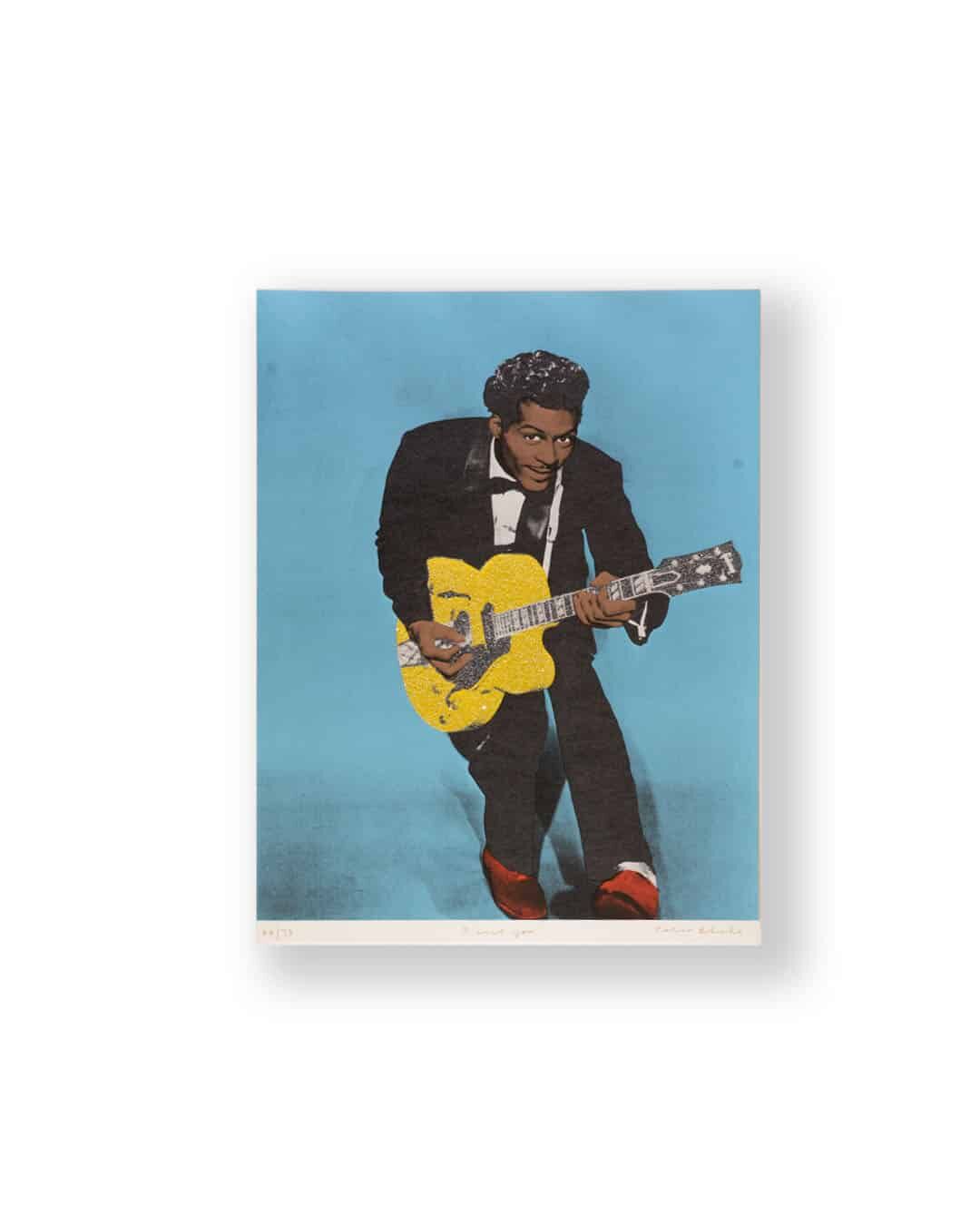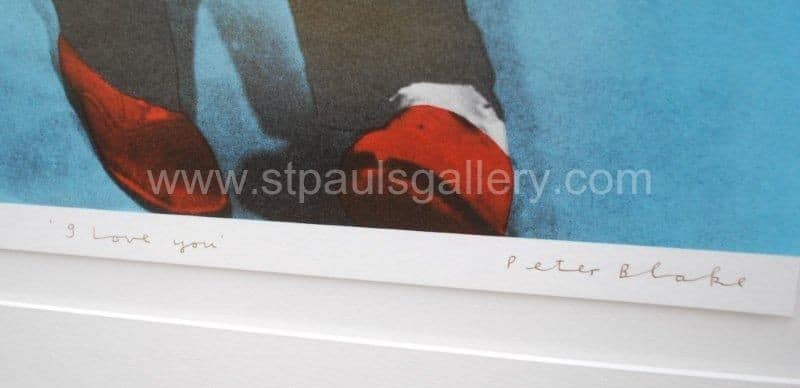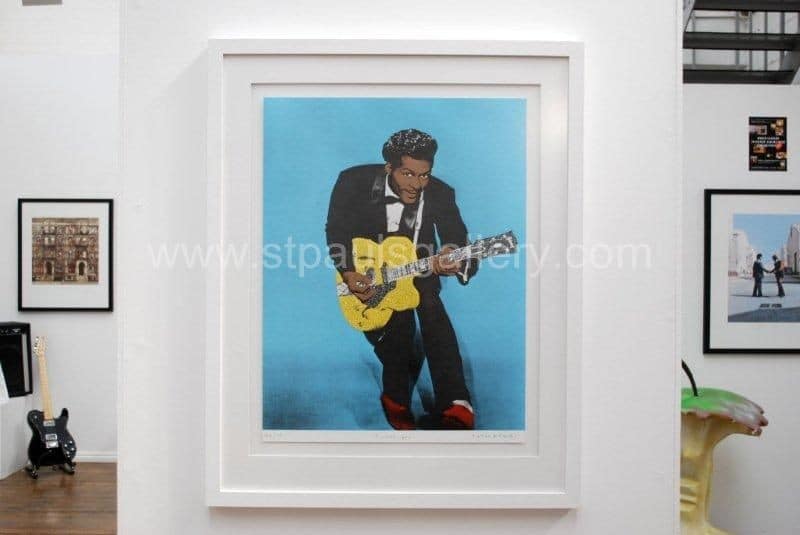Peter Blake Chuck Berry Signed Print From I Love You Edition
£4,950.00
Date: 2005
Signed By: Sir Peter Blake
Edition: 75 World Wide
Dimensions: 750 mm x 578mm
Condition: New / Mint
Medium: Silkscreen on colorplan with diamond dust
Description
Peter blake Sir Peter Blake Ra is one of the Uk’s premier artists. His most famous artwork was created for the Beatles Sergeant Pepper album cover. The Beatles Sergeant Pepper print along with other Sir Peter Blake editions are available on the site.
From 1946 to 1951 the British painter and illustrator Peter Thomas Blake attended Gravesend Technical College and School of Art and then transfered to the Royal College of Art in London, which he left in 1956. Blake’s early work is dominated by two major subjects: fantastic scenes from the world of the circus and naturalistic paintings with autobiographic elements. The imitation of the popular image world of event posters, which Blake combined with portraits, was typical of his work. Circus characters and children reading comic books are among the artist’s typical motifs. In style and content both types of pictures paved the way for English Pop Art. Thanks to a Leverhulme scholarship, Blake had the opportunity to travel through Europe from 1956 to 1957, where he acquainted himself with the artistic trends of the time. In 1959, inspired by reproductions by Robert Rauschenberg and Jasper Johns, Blake began to paint collage-like pictures of pop musicians and filmstars and to produce assemblages made of recycled material, postcards and other items. Alongside his collages Date: 2005
Signed By: Sir Peter Blake
Edition: 75 World Wide
Dimensions: 750 mm x 578mm
Condition: New / Mint
Medium: Silkscreen on colorplan with diamond dust
Blake also worked with the medium of imitation: Painted collages, imitated pin-up-boards and locker doors, enlarged, painted postcard motifs and painted adaptations of posters appeared. The cover design for the Beatles album ‘Sergeant Pepper’s Lonely Hearts Club Band’ (1967) was one of his greatest successes. In 1975 Blake was one of the founding members of the ‘Brotherhood of Ruralists’. His imagery changed under the influence of this group of artists and his rural surroundings in Wellow on Avon. The members expected life in the country to provide them with new artistic impulses and moral renewal. Just like the pre-Raffaelites, they strove for an aesthetic permeation of all parts of life. Childhood memories, fairy tales and elves, depicted in realistic style using techniques of the old masters, became his favourite subjects



Reviews
There are no reviews yet.